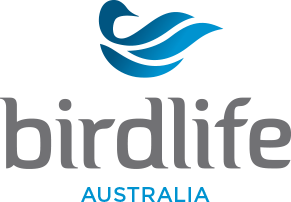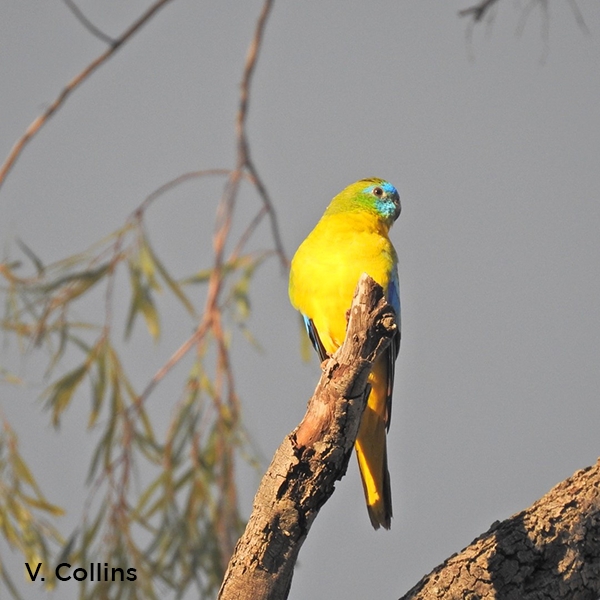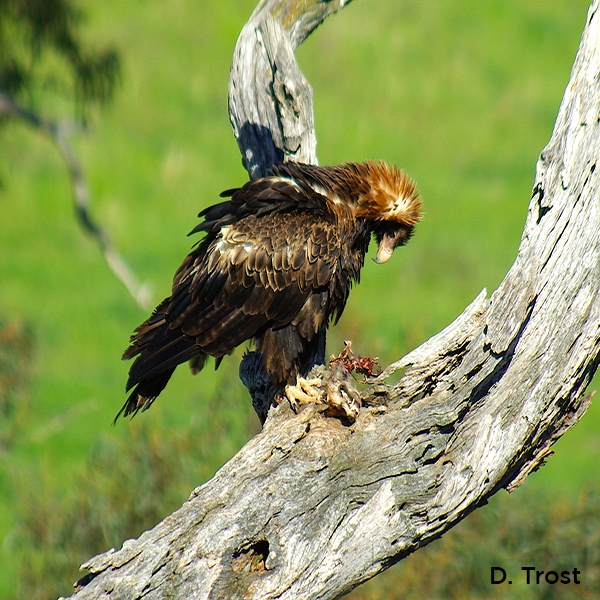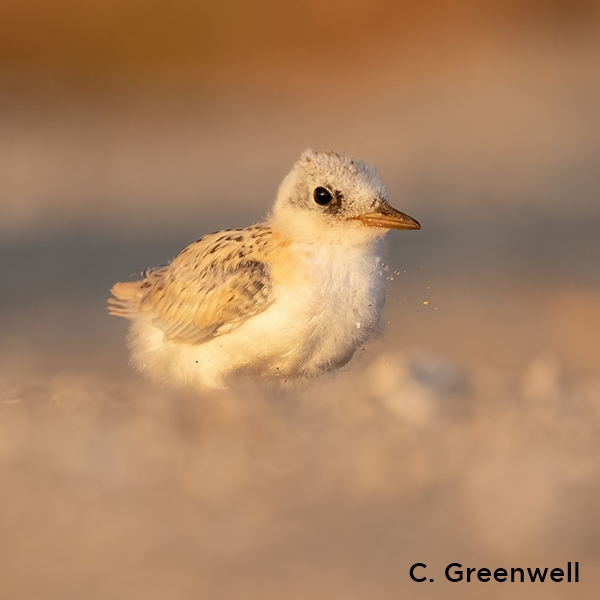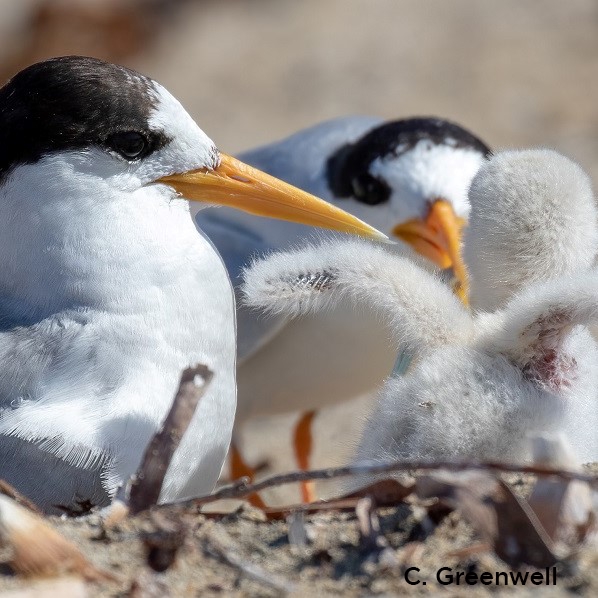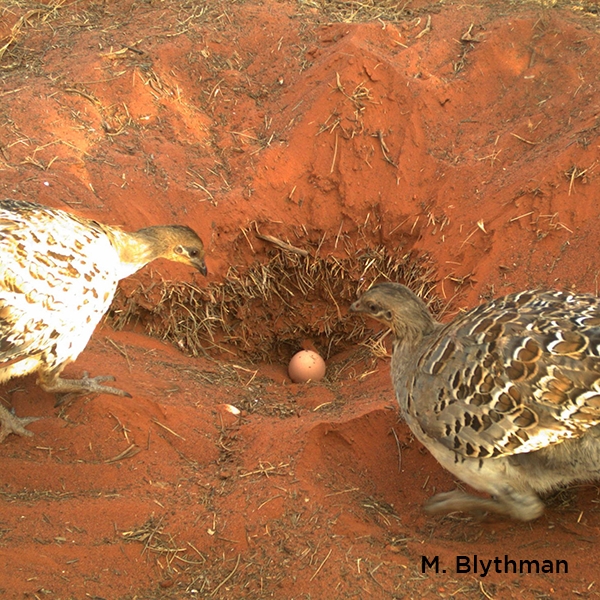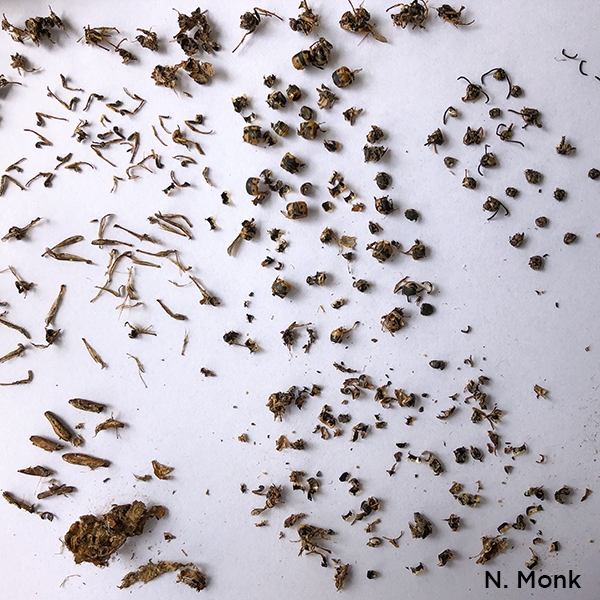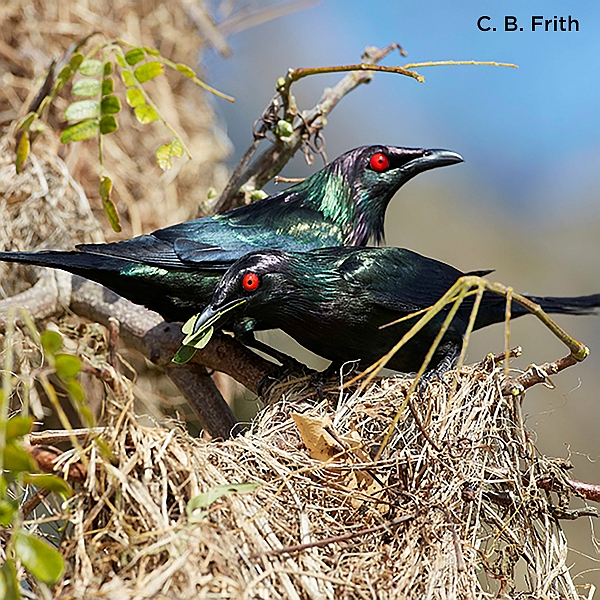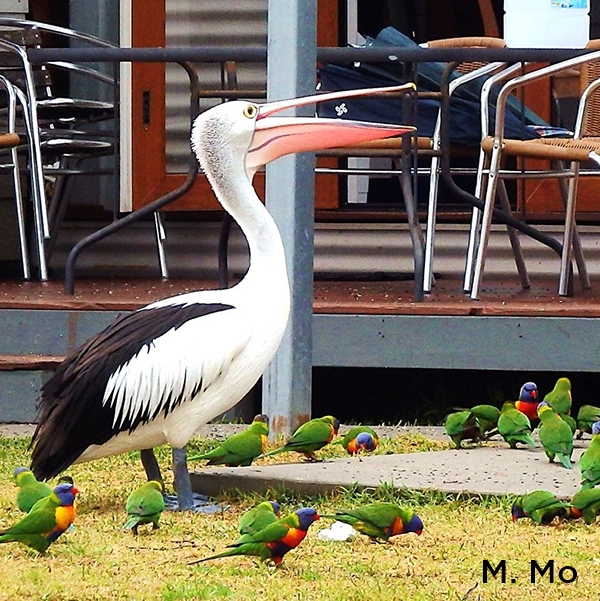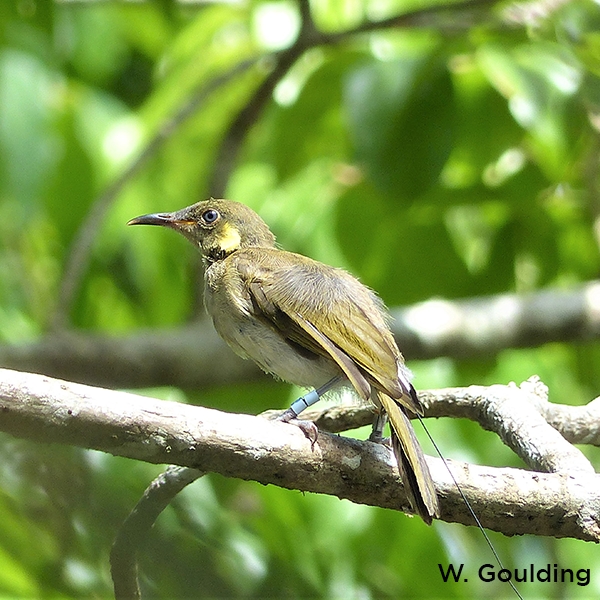New insights on the breeding biology of the Crow Honeyeater Gymnomyza aubryana suggest convergence with the Mao G. samoensis
Pascal Villard, Jean-Marc Mériot, Jérôme Fuchs
Abstract
polyphyletic, with the largest, the Crow Honeyeater G. aubryana, being a distinct and ancient lineage. The Critically Endangered Crow Honeyeater is a secretive species that lives in the rainforest of New Caledonia. For two breeding seasons (S1 in 2019 and S2 in 2020) we studied its breeding biology in the Parc Provincial de la Rivière Bleue. In S1, three nests (N1, N2, N3) were found and one nest (N4) in S2. Three dismantled nests (N1, N2 and N4) revealed four distinct layers; detailed measurements showed that Nest N2 consisted of 507 pieces of nest material and weighed 103 g. The female built the nest and incubated the one-egg clutch for 75% of time over a 24-hour period. The female rolled the egg each 33 minutes (n = 50) during the day and 118 minutes (n = 23) at night. The nest was 9.5 m above ground in a small tree (trunk 12 cm in diameter) and the trees and shrubs within 10 m mainly had trunks ⩽10 cm in diameter (n = 4). Laying occurred during the dry season (August–October). The feeding rate of the nestling was 2.6 times/h. Animal prey items accounted for 74.7% by number, of which 66.5% were orthopterans; indeterminate 9.7%, fruit 12.4% and only 3.2% was nectar (n = 1788). Prey items in the size range 21–40 mm in length constituted 59% of the nestlings’ food by number. The number of faecal sacs produced per nestling averaged 1.7/h (n = 956). The young fledged at 25.5 days (mean for two nests) and did not return to the nest, but was fed for another 2.6 months. One juvenile, from an unknown nest, remained at least 16.5 months in the adults’ territory. The home range of a male during 2.6 months (September to early December) was 24 ha. The Crow Honeyeater has a slow life history for breeding biology, as found also for the Mao G. samoensis. Both species evolved on tropical islands and show a convergent adaptation.
References
Andersen, M.J., McCullough, J.M., Friedman, N.R., Townsend Peterson, A., Moyle, R.G., Joseph, L. & Nyári, Ã.S. (2019). Ultraconserved elements resolve genus-level relationships in a major Australasian bird radiation (Aves: Meliphagidae). Emu – Austral Orntithology 119, 218–232.
BirdLife International (2018). Species factsheet: Crow Honeyeater Gymnomyza aubryana. Available online: http://datazone.birdlife.org/species/factsheet/22704320
Butler, D. & Stirnemann, R. (2013). Leading the Recovery of Two of Samoa’s Most Threatened Bird Species, the Tooth-billed Pigeon (Manumea) and the Mao (Ma’oma’o) Through Ecological Research to Identify Current Threats. Technical Series 25. Conservation International Pacific Islands and Oceans Program, Apia, Samoa.
Chalfoun, A.D. & Martin, T.E. (2007). Latitudinal variation in avian incubation attentiveness and a test of the food limitation hypothesis. Animal Behaviour 73, 579–585.
Delafenêtre, J., Mériot, J.M. & Létocart, Y. (2001). Premières données sur l’étude du Méliphage noir (Gymnomyza aubryana) dans le Parc Provincial de la Rivière Bleue. Service des Parcs et Réserves Terrestres, Direction des Ressources Naturelles, Province Sud, Nouvelle Calédonie.
del Hoyo, J. (2020). All the Birds of the World. Lynx Edicions, Barcelona, Spain.
Ford, H. (1999). Nest site selection and breeding success in large Australian Honeyeaters: Are there benefits from being different? Emu 99, 91–99.
Freeman, B.G. & Mason, N.A. (2014). New Guinean passerines have globally small clutch-sizes. Emu 114, 304–308.
Hannecart, F. & Létocart, Y. (1980). Oiseaux de Nouvelle Calédonie et des Loyautés, Volume 1. Cardinalis, Nouvelle Calédonie.
Hannecart, F. & Létocart, Y. (1983). Oiseaux de Nouvelle Calédonie et des Loyautés, Volume 2. Cardinalis, Nouvelle Calédonie.
Higgins, P., Christidis, L. & Ford, H. (2008). Family Meliphagidae (honeyeaters). In: del Hoyo, J., Elliott, A., Sargatal, J. &
Christie, D.A. (Eds). Handbook of the Birds of the World. Volume 13: Penduline-tits to Shrikes, pp. 498–691. Lynx Edicions, Barcelona, Spain.
Higgins, P.J., Christidis, L., Ford, H. & Sharpe, C.J. (2020). Crow Honeyeater (Gymnomyza aubryana), version 1.0. In:
del Hoyo, J., Elliott, A., Sargatal, J., Christie, D.A. & de Juana, E. (Eds). Birds of the World. Cornell Lab of Ornithology, Ithaca, New York. Available online: https://doi.org/10.2173/bow.crohon1.01
Higgins, P., Peter, J. & Steele, W. (Eds) (2001). Handbook of Australian, New Zealand & Antarctic Birds, Volume 5: Tyrant-flycatchers to Chats. Oxford University Press, Melbourne.
Karl, B.J. & Clout, M.N. (1987). An improved radio-transmitter harness with a weak link to prevent snagging. Journal of Field Ornithology 58, 73–77
Keast, A. (1985). An introductory ecological biogeography of the Australo-Pacific Meliphagidae. New Zealand Journal of Zoology 12, 605–622.
Letunic, I. & Bork, P. (2019). Interactive tree of life (iTOL) v4: Recent updates and new developments. Nucleic Acids Research 47, W256–W259.
Ley, A.J. & Williams, M.B. (1998). Nesting of the Regent Honeyeater Xanthomyza phrygia near Armidale, New South Wales. Australian Bird Watcher 17, 328–336.
Low, P., Angus, W., Wagner, A., Wilkin, D., Shiels, M., Dockerill, R. & Hochuli, D. (2013). Use of spider silk for nest building by the Regent Honeyeater Anthochaera phrygia and the Helmeted Honeyeater Lichenostomus melanops cassidix. Australian Zoologist 36, 349–354.
Marki, P.Z., Jønsson, K.A., Irestedt, M., Nguyen, J.M., Rahbek, C. & Fjeldså, J. (2016). Supermatrix phylogeny and biogeography of the Australasian Meliphagides radiation (Aves: Passeriformes). Molecular Phylogenetics and Evolution 107, 516–529.
Mayr, E. (1944). Birds collected during the Whitney South Sea Expedition. 54, notes on some genera from the Southwest Pacific. American Museum Novitates 1269, 1–8.
Mériot, J.M., Delafenêtre, J. & Létocart, Y. (2003). Etude du Méliphage noir (Gymnomyza aubryana) dans le Parc Provincial de la Rivière Bleue (de septembre à novembre 2003). Service des Parcs et Réserves terrestres, Direction des Ressources Naturelles, Province Sud, Nouvelle Calédonie.
Mériot, J.M. & Létocart, Y. (2005). Suivi de l’activité vocale et de la nidification du Méliphage noir (Gymnomyza aubryana) dans le Parc Provincial de la Rivière Bleue (de juillet à décembre 2004). Service des Parcs et Réserves terrestres, Direction des Ressources Naturelles, Province Sud, Nouvelle Calédonie.
Noske, R.A. & Carlson, A.J. (2011). The breeding biology of the Dusky Honeyeater Myzomela obscura in the Northern Territory, and the importance of nectar in the diet of nestling honeyeaters. Australian Field Ornithology 28, 97–113.
Proctor, N.S. & Lynch, P.J. (1993). Manual of Ornithology. Avian Structure & Function. Yale University Press, New Haven, Connecticut, USA.
Russell, E. (2000). Avian life histories: Is extended parental care the southern secret? Emu 100, 377–399.
Sofaer, H.R., Nagle, L., Sillett, T.S., Yoon, J. & Ghalambor, C.K. (2020). The importance of nighttime length to latitudinal variation in avian incubation attentiveness. Journal of Avian Biology 51, e02319.
Stirnemann, R. (2015). Ecology and Drivers of Decline in a Tropical Island Honeyeater: The Ma’oma’o. PhD thesis. Massey University, Manawatu, New Zealand.
Stirnemann, R., Potter, M.A., Butler, D. & Minot, E. (2016). Slow life history traits in an endangered tropical island bird, the Ma’oma’o. Bird Conservation International 26, 366–379.
Tieleman, B., Williams, J. & Ricklefs, R. (2004). Nest attentiveness and egg temperature do not explain the variation in incubation periods in tropical birds. Functional Ecology 18, 571–577.
Tokue, K. & Ford, H. (2007). The influence of patterns of food abundance on the breeding seasons and clutch sizes of Red Wattlebirds and Noisy Friarbirds. Emu 107, 151–155.
Villard, P., Mériot, J.-M. & Boudinot, P. (2022). A Crow Honeyeater Gymnomyza aubryana escapes a Black Rat Rattus rattus attack at its nest with its egg. Australian Field Ornithology 39, 1–6.
Winkler, D., Billermann, S. & Lovette, I. (2015). Birds Families of the World: An Invitation to the Spectacular Diversity of Birds. Lynx Edicions, Barcelona, Spain.
Yabaki, M., Winkworth, R.C., McLenachan, P.A., Aalbersberg, W., Winder, L., Trewick, S.A. & Lockhart, P.J. (2016). Placing the Fijian honeyeaters within the meliphagid radiation: Implications for origins and conservation. Pacific Conservation Biology 22, 262–271.
Zima, P.V.Q., Perrella, D.F. & Francisco, M.R. (2021). The influence of egg presence and eggshell colour in the attraction of visually oriented predators to nests of a tropical forest bird. Ibis 163, 1080–1086.
